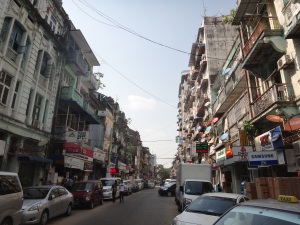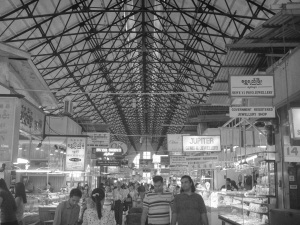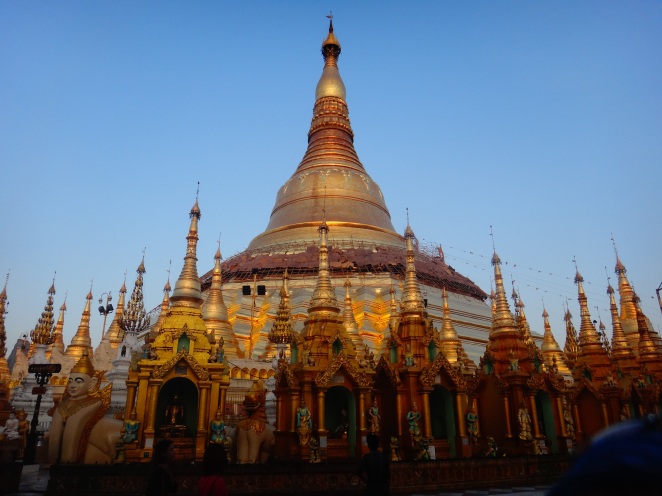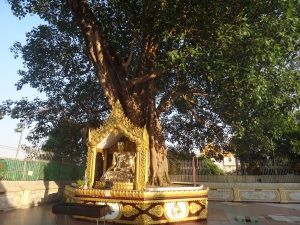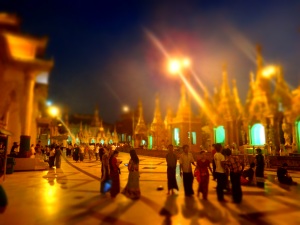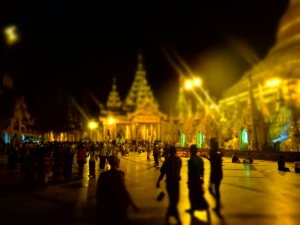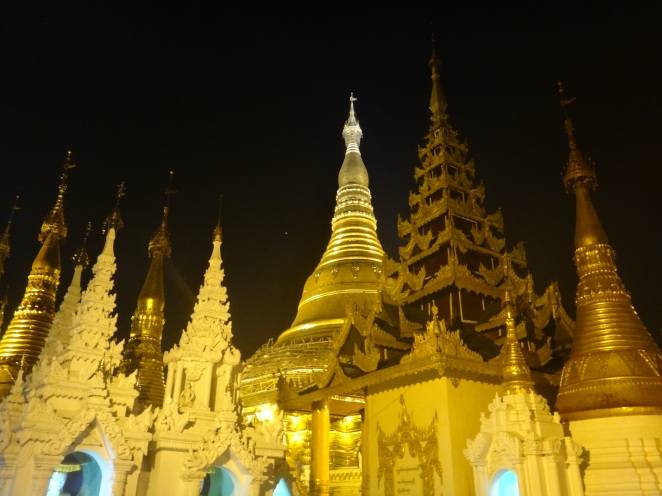Having had a few days in the modern wonder that is Singapore, we landed in Yangon looking forward to exploring the mysteries of Myanmar.
Yangon is the former capital of Myanmar, and remains the largest city with a population in excess of 5 million. It was originally a small fishing village called Dagon centred about the Shwedagon Pagoda. In 1755 King Alaungpaya conquered the village and renamed it Yangon, since then settlements formed around the central Dagon area eventually forming the sprawling city of today. When you visit the city now, you will notice that it is now made up of a multitude of ‘townships’, a reminder of how the city developed from it’s humble beginnings. The British seized Yangon in the Anglo-Burmese War of 1852, and subsequently transformed Yangon into the commercial and political hub of British Burma-lining the streets with colonial buildings and British influence.
We arrived at our hotel in downtown and hit the streets to do some exploring-the par for course upon arriving anywhere on our travels. Stepping out onto the street and we were met with the most intense heat that I think I have ever experienced….The street temperature was 46 degrees! We ducked, dodged and weaved our way into every spot of shade possible as we ventured towards our first tourist spot-the 2,500 year old Sule Pagoda in central downtown. Not quite what you would expect from an ancient pagoda, nowadays it serves a dual purpose, the other being that of a rather busy roundabout. Supposedly enshrined in the temple is a hair of Buddha, given to two Burmese merchant brothers by Buddha himself. More recently, during the 1988 and 2007 protests, the Sule Pagoda was a meeting point for anti-government and pro-democracy protesters.
We negotiated the Yangon traffic to enter the temple and were soon hotfooting it around the pagoda-literally! At all religious sites in Myanmar you have to remove your shoes and socks and, bearing in mind the temperatures, it felt like we were walking on the surface of the sun! This feeling was amplified by the suns’ reflection off the quite wonderful golden stupa located in the middle of the temple-and soon we found ourselves a shady spot to simply sit, and absorb.
Ready to brave the heat once again, we set off to explore the colonial architecture of the Yangon streets. It was really tough, there’s no comfort of an air conditioned MRT like you have in Bangkok & Singapore-you just have to tackle the heat and traffic, and take it slow! Soon you realise that Yangon has a three dimensional street structure. I know that sounds like a strange statement, but it’s the best way that I can describe the fact that to find offices, shops and businesses you look all around on street level, as well as up. For example, our hotel was on the seventh and eighth floor of a building, with just a little doorway and a lift giving you access to all businesses in the building.
Walking around the streets we encountered street food like no other. Sure in Bangkok and Siem Reap you have street stalls selling bugs, but in Yangon the street vendors offer something quite different, but equally as difficult for us to comprehend. The best way that I can describe it is to call it ‘entrails fondue’, basically you have a street vendor with a large vat of hot oil, and a selection of unidentifiable ‘animal parts’. Locals just take a seat around vat, pick a nugget of choice, and then cook it themselves in the oil. I have to say that the thought of actually trying this cuisine didn’t even come close to crossing my mind. There have been a number of formally questionable culinary experiences over the last seven months, but this proved to be a step too far!
We did end up discovering some local fare, albeit not as risky as the ‘fondue’-and it was done so quite by accident. Settling down for the first bottle of Myanmar Beer and a street vendor comes around serving what I thought were salted peanuts, I managed to order some of what he was selling and we were given a container of sweetcorn and beans, accompanied with an unidentified paste. Not what we were expecting, but it was absolutely delicious, we still don’t know what the paste was (we were afraid to ask!) and haven’t seen this titbit anywhere else-so if you’re in Yangon, keep your eyes pealed. Frequenting the street café located under our hotel, we sampled eating as the locals do-a few beers and a number of little side dishes. Meat balls with chilli sauce, vegetable noodles, spiced sausage and more sweetcorn and beans-spot on!
Having explored the streets and Sule Pagoda, next on the list for Yangon were the central market and the famous Shewadagon Pagoda. The market is a welcome respite from the heat of the day, and so we headed there before heading up to the temple for sunset. Yangon market has to rate as once of the best ‘gift’ markets that we have been to, a cavern of jade, jewels, clothing and art. Interesting, bustling and colourful-and, of course, out of the heat of the midday sun.
With no tuk-tuks or identifiable form of alternative transport, we grabbed a taxi and headed for Shwedagon Pagoda. Here we encountered our first ‘tourist tax’ when hit with an unexpected $8 fee for entry to the pagoda-at the time it seemed quite expensive, as Myanmar is in comparison to the rest of South East Asia, but it would prove to be worth every penny.
Shwedagon Pagoda was constructed more than 2,600 years ago, making it the oldest Buddhist stupa in the world. It is situated on Singuttara Hill and towers above you at a height of 99 metres, overlooking the sprawling Yangon city below. It is the most sacred Buddhist pagoda in Myanmar, as it is believed to contain relics of the four previous Buddhas. The staff of Kakusandha, the water filter of Koṇāgamana, a piece of the robe of Kassapa, and eight strands of hair from the head of Gautama.
It was here that we would encounter something that we found quite funny, all of a sudden we found ourselves being the subjects of surreptitious photography. Locals would be walking by and engineering opportunities to get us in their photos, ‘check out the tourists’! It’s easy to forget that until 2012, Myanmar has been a difficult place for people to travel, and so tourists are still something of a novelty. Being a subject of so much intrigue in a heaving and populous city just seemed quite odd.
Our inflating ego’s aside, Shwedagon Pagoda proved to be absolutely breath-taking. A large complex of temples and pagodas centred on Shwedagon itself, as the sun set, the darkness drew in and the candles were lit-we both had to take a moment to come to terms with our surroundings-it really was quite overwhelming.
Having been blown away by Shwedagon, our time in Yangon had drawn to the end and we readied ourselves for a night train to possibly the most famous of Myanmar images-the pagodas of Bagan. Our research had informed us that the train journey was a little bumpy, but well worth it for the views. Little did we know how ‘bumpy’ it would be….



